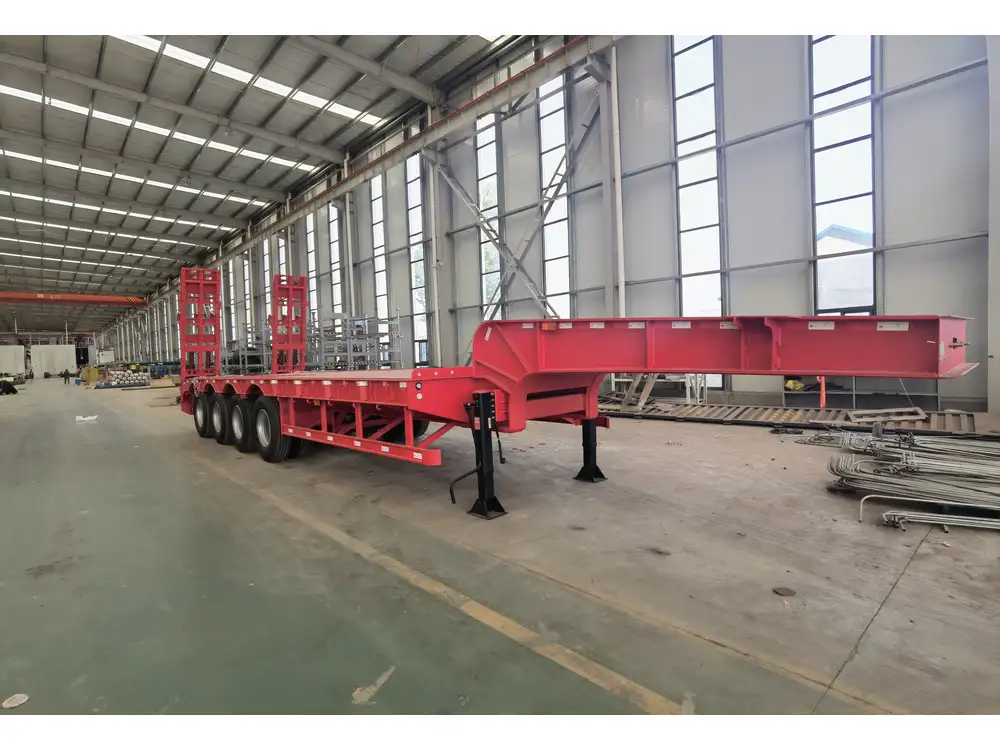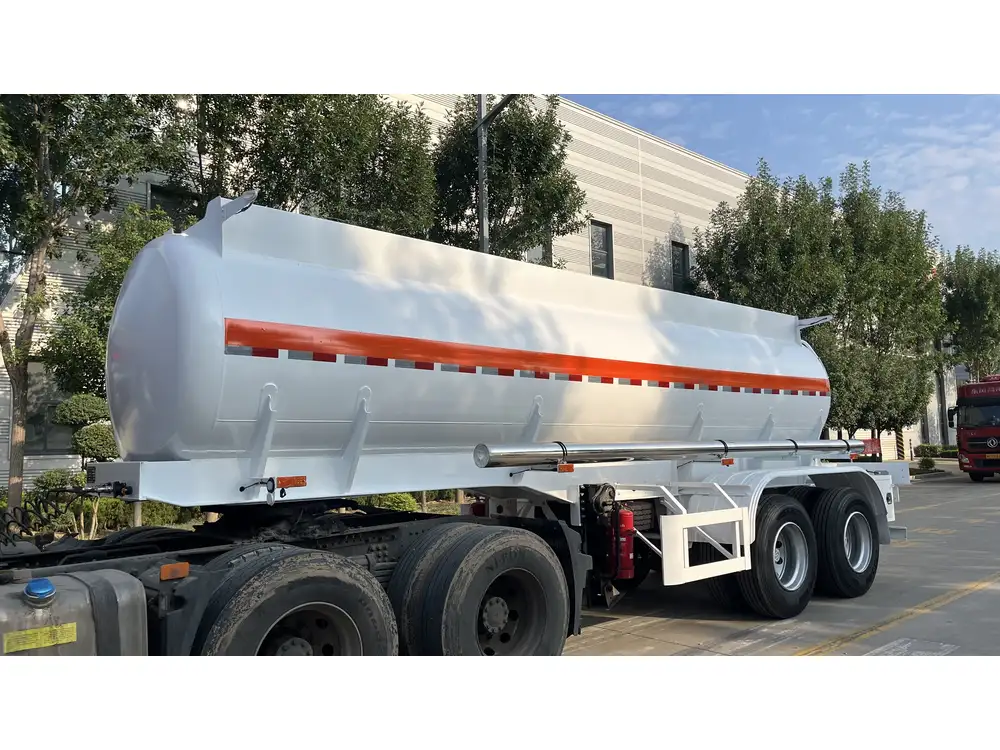Introduction to Semi-Trailer Brake Systems
When operating semi-trailers, the integrity of the brake system is paramount to ensure the safety of drivers, cargo, and other road users. Understanding how to effectively check semi-trailer brakes can prevent accidents, improve vehicle performance, and extend the lifespan of your equipment. In this comprehensive guide, we aim to provide detailed steps, valuable insights, and best practices for inspecting semi-trailer brakes.
Understanding the Components of a Semi-Trailer Brake System
Before delving into the inspection process, let’s explore the essential components of a semi-trailer brake system, which primarily consists of:
| Component | Description |
|---|---|
| Brake Pads | Friction materials that compress against rotors to create stopping power. |
| Brake Discs or Drums | Components against which brake pads press for deceleration. |
| Brake Lines | High-pressure hoses that transmit brake fluid. |
| Air Compressor | Pressurizes air for braking in air brake systems. |
| ABS Module | Prevents wheel locking during hard braking. |
| Brake Chambers | Convert air pressure into mechanical force. |
| Slack Adjusters | Adjust the distance between brake shoes and drums to ensure efficiency. |

Step-by-Step Guide to Checking Semi-Trailer Brakes
Now, let’s explore the structured steps to ensure a thorough and effective brake check.
1. Initial Visual Inspection
- Check for Leaks: Begin your inspection by examining all brake lines, chambers, and connections for any signs of fluid leaks. Brake fluid leaks can lead to diminished brake performance and should be addressed immediately.
- Inspect Brake Pads: Look at the thickness of the brake pads. If they appear worn down to their minimum thickness (typically marked), they should be replaced.
- Examine Brake Drums/Discs: Inspect the surfaces for cracks or deformities, which can impair braking efficiency.
2. Test the Brake Actuation
Air Brake Systems: Start the engine and build up air pressure. Ensure the air gauge shows appropriate levels (usually between 100-120 PSI). Conduct a brake test to see if the brakes engage properly when depressed.
Quick Test Steps:
- Release the parking brake.
- Move forward at a slow speed (5 MPH).
- Apply foot brake gently and listen for sounds like grinding or scraping, which may indicate issues.
Hydraulic Brake Systems: Check the brake fluid level in the master cylinder. Make a test stop in a controlled environment to evaluate responsiveness.

3. Brake Pad Thickness Measurement
Use a Caliper: Using a caliper gauge or a simple ruler, measure the thickness of each brake pad. Here’s a general guideline:
Measurement (inches) Action Required Below 1/4″ Immediate replacement needed. Between 1/4″ and 1/2″ Monitor closely; consider replacement soon. Above 1/2″ No action required.
4. Check Brake Connectivity
Inspect Slack Adjusters: Ensure that slack adjusters are in good condition and properly adjusted. If they require adjustment, follow the manufacturer’s specifications for proper settings and adjustments.
Automatic Slack Adjusters: Confirm that the automatic slack adjusters function correctly by observing their return movement when brakes are released.
5. Functional Test of Anti-lock Braking System (ABS)
Conduct a system check for the ABS indicator light before starting the vehicle. A lit warning light indicates a fault in the ABS that requires further investigation.
- If equipped, diver deeper by activating the ABS during a controlled braking simulation (in a safe environment) to ensure it engages properly.

6. Road Test Evaluation
- Perform a road test to evaluate how your semi-trailer brakes function under actual driving conditions. Pay attention to:
- How quickly the truck stops.
- Ensure that the braking feels even; any pulling to one side could indicate uneven brake wear.
7. Document Findings and Take Action
- Document any discrepancies or issues found during your inspection. Keep a maintenance log detailing what was inspected, any actions taken, and recommendations for future inspections. This log helps maintain compliance and can assist in warranty claims.
Common Issues with Semi-Trailer Brakes and Solutions
Let’s break down some common brake-related issues, their possible causes, and prescribed solutions.
| Issue | Possible Causes | Recommended Solution |
|---|---|---|
| Uneven Braking | Worn brake pads or faulty slack adjusters | Replace pads; adjust slack adjusters. |
| Brake Fade | Overheating or worn discs/drums | Allow brakes to cool; replace worn components. |
| Poor Response | Air leak or low fluid level | Check air lines or fluid levels, repair leaks. |
| ABS Warning Light Activated | Faulty ABS module or broken sensors | Diagnostic check needed, replace faulty components. |

Keeping Up with Maintenance Schedules
Regular maintenance helps ensure brake systems function optimally. Here’s an outline of a maintenance schedule:
| Maintenance Task | Frequency | Notes |
|---|---|---|
| Visual Brake Inspection | Monthly | Ensure all components are secure and functional. |
| Brake Pad Thickness Check | Every 10,000 miles | Replace if below recommended range. |
| Brake Line and Chamber Check | Bi-Annually | Inspect for wear or corrosion. |
| ABS Functionality Check | Annually | Verify functionality for safety compliance. |
Conclusion: Prioritize Safety and Compliance
Understanding how to check semi-trailer brakes effectively equips operators and fleet managers with the knowledge needed to maintain safety and performance. Regular inspections and adherence to maintenance schedules not only prolong the lifecycle of the brake components but also reinforce compliance with transportation regulations.
Make brake checks a non-negotiable aspect of your semi-trailer operations; it’s not merely about performance—it’s essential for safety. As your trusted partner in the semi-trailer manufacturing industry, we are committed to providing solutions and insights that equip you for success on the road. Remember, a well-maintained brake system protects not only your investments but, more importantly, the lives of all road users.
Call to Action
For expert advice and high-quality semi-trailer components that ensure efficiency and safety, please reach out today. Our experienced team is here to address your needs and ensure your semi-trailer performs at its best.



